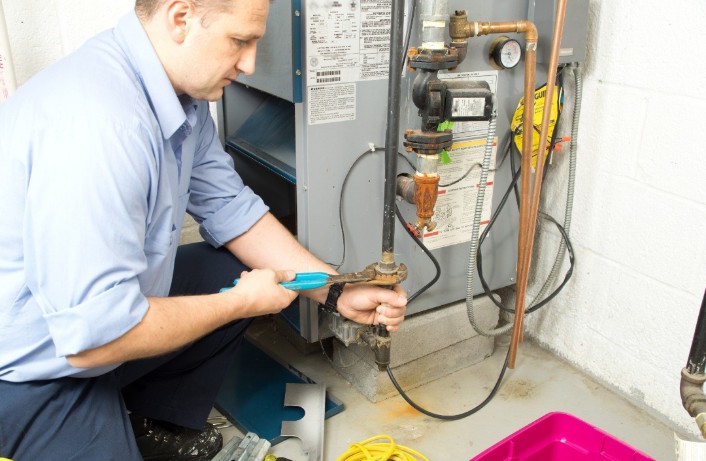Are you searching for the type of furnace to have installed in your home? It’s important that you choose the right one for the climate you live in. Otherwise, you’ll waste energy.
Unsure of which furnace to install in your home? Take a look at the different types of furnaces available. That way, you can compare each one and determine which one would be right for your needs.
Find out which furnace types are the most popular today. Learn how each one works, its benefits, and which type will fit your home best. Read on and find out more:
Contents
Oil Furnaces
Oil Furnaces are some of the most efficient home heating systems available. They produce heat through burning fuel, which is usually oil. They are a popular choice of furnace due to their durability, low maintenance requirements, and relatively low cost to operate.
An oil furnace consists of an oil burner, a flue, a heat exchanger, a filter, and a fuel tank. The oil burner forces a stream of pressurized air into a carefully regulated fuel chamber, then ignites the fuel and produces heat.
Gas Furnaces
They are fueled by natural or propane gas being burned through burners and then circulated through a venting system. This type of furnace is considered one of the most efficient types on the market.
A gas furnace is also known for being easy to program and cost-effective to operate. They also typically have higher BTU ratings, meaning that they produce heat more quickly than the other types of furnaces.
Electric Furnaces
Electric furnaces are one of the most modern heating options for homes today. They are an energy-efficient, cost-effective choice for homeowners. An electric furnace is powerful and quite simple to use. When the thermostat activates, the electric furnace is powered by electricity to produce heat.
Electric furnaces work effectively in cold climates because of their flexibly adjustable thermostat, and because they are extremely efficient, those using them only pay for what they need.
Wood and Pellet Furnaces
These furnaces are powered by either wood pellets, sawdust, wood chips, or other materials made from renewable sources. Wood or pellet furnaces are the least expensive of all furnace types yet operate differently than oil or gas furnaces because they require more frequent cleanings and maintenance.
The high-efficiency stove creates heat by burning the pellets to generate energy and heat. Wood and pellet furnaces are also able to maintain a constant temperature due to their computerized controls.
Before you choose a furnace for your home, read this guide on furnace installation preparation first. This way, you’ll prevent any unpleasant surprises along the way.
Solar Furnaces
Furnaces with solar power are becoming an increasingly popular option due to their potential to reduce heating bills and be kinder to the environment. Solar furnaces use thermal energy from the sun to generate heat to warm a home or building.
Solar furnaces are usually a home heating system with an energy collection panel, furnace unit, and energy storage unit. This type of furnace requires no fuel other than free, energy-saving solar power.
Explore and Discover These Types of Furnaces
There you have it – an overview of the different types of furnaces, including oil, gas, electric, and more. Understanding each type of furnace can help you make informed decisions about your home’s heating system.
For more information, visit your local HVAC contractor to discuss the best options for your home.
To access additional informative topics, please explore the remainder of our website.

